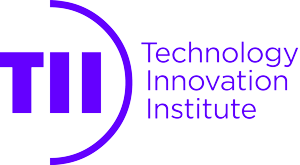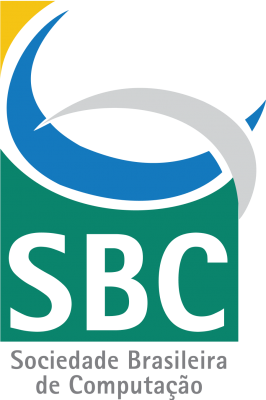Most of the Industry Program will be happening on-site and live streamed to remote attendees, while a small part will be only virtual. All presentations and panels will be available to be watched on-demand on the virtual platform from the conference dates.
LIST OF PRESENTATIONS:
IP 1: BILL OF MATERIALS (BOMS): A PREREQUISITE SOLUTION FOR NEXT GENERATION NETWORKS (BY SMART TALK BEACON)
MONDAY, DEC 5 8:00 - 8:30 / LOCATION: Oceania IV
Abstract:
xBOMs are the foundation to Enable; Chain of Custody and Security Operations for Network Virtualization From the National Telecommunications and Information Administration's SBOM FAQ "A Software Bill of Materials (SBOM) is a complete, formally structured list of components, libraries, and modules that are required to build (i.e. compile and link) a given piece of software and the supply chain relationships between them. These components can be open source or proprietary, free or paid, and widely available or restricted access." Infrastructure is defined as a standard implementation of services required to securely operate, manage and support IT/OT infrastructure including sharing of information, solutions, devices and users. Considerable effort has and is being invested in the definition, implementation and use of SBOMs to reduce security risks and improve software development and support processes. Similar efforts related to hardware identification should occur using similar SBOM concepts to mitigate failures and security risk. SBOMs and hardware (HBOMs) concepts can be applied to network design, security, operation and performance optimization. Implementing xBOMs to simplify the processes to deliver complex tasks required to operate, manage and support a new infrastructure is the focus of this presentation. There are 3 types of BOMs discussed in the Industrial Internet Consortium (IIC) Secure Communications Infrastructure by Design (SCID) Group: NBOM - Network connection points and properties SBOM - Software and supply chain (includes network and hardware software) HBOM - Attached hardware and dependencies Important questions need to be asked related to: What happens when you link xBOMs together? How are security operations impacted by xBOM operations? What are the tools required for a new core infrastructure: Path management Packet Management QoS Inventory management Error management Some of these tools and concepts will be addressed in this presentation.
Biography:
ALFRED STRAUCH
Alfred graduated from the University of Regina with a bachelor of Art and Sciences. He has been involved in the computer industry for more than 25 years (including 15 years in the surveillance industry. Smart Talk Beacon Solutions Ltd. was started 5 years ago to develop a monitoring and support solution for surveillance cameras. Experience and 3 product versions of our product lead to the patenting and development of cutting edge “No Trust Security” architecture and protocol to secure, monitor, operate, manage and support IoT devices.
STEVEN CARBNO
Steven Carbno is BSc from University of Regina, 20 yrs of programming experience. Architect and developer of “No Trust Security” architecture and protocol to secure, monitor, operate, manage and support IoT devices.
IRFAN AL-ANBAGI
Irfan Al-Anbagi is an Associate Professor in the Faculty of Engineering and Applied Science at the University of Regina. He received his PhD degree in Electrical and Computer Engineering from the University of Ottawa in October 2013. From 2013 to 2015, he worked as a Postdoctoral Fellow and a Product Development Manager of the “SecCharge” Project at the University of Ottawa. His research activities focus on security and reliability in networked systems, including quality of service (QoS), reliability, optimization and cybersecurity—specifically, modelling of failure propagation in networked cyber-physical systems; security and QoS in cloud-edge architectures; implementation of ambient intelligence in internet of things (IoT) systems; and wireless sensor networks and their implementation in critical applications. Dr. Al-Anbagi is registered as a professional engineer with the Association of Professional Engineers and Geoscientists of Saskatchewan (APEGS) and Professional Engineers Ontario (PEO).
IP 9: LESSONS LEARNED FROM 5G PRIVATE NETWORK ENABLING USE CASES IN SMT INDUSTRIAL SHOP FLOOR (BY FLEXTRONICS, NOKIA)
MONDAY, DEC 5 8:30 - 9:00 / LOCATION: Oceania IV
Presenter:
Gabriel Fré, Flextronics Institute of Technology
Abstract:
Reliable, low-latency and high-performance 5G access is one of the key pillars sustaining the vision of industry 4.0 and of the reconfigurable factory of the future. The ambition is to be able to rearrange entire factory production lines both logically and physically in the factory space with a zero-touch approach to enable a quick adaptation to changing market demands. To enable this vision, factory elements must replace their wired OT (Operation Technology) highly reliable wired connection with wireless access links, like WiFi-6 and private 5G SA (Stand Alone) networks. This presentation introduces the challenges faced in covering a representative production environment of an SMT (Surface Mounted Technology) production line with a live 5G SA (Stand Alone) private network. This work contributes to the body of empirical knowledge on how a live 5G networks perform in a live factory environment. Results demonstrates the feasibility of few "data shower" use cases focusing on using the 5G network to perform live OTA (Over the Air) firmware programming of devices produced in the SMT production line. Data show an increase of about of factor 5x and 10x of the productivity of the production line (estimated in number of devices produced per hour) line when performing the OTA firmware upgrade over 5G, with respect to WiFi-6 and WiFi-4, respectively. The presentation provides technical details on the platform used for testing the network under stressful workload conditions and describes a few future research directions for enabling programmable factory-aware networking.
Biography:
 Gabriel Fré
Gabriel Fré
Gabriel Fré, PhD in electrical engineering from Universidade Federal de Itajuba (UNIFEI), at Minas Gerais, Brazil, is R&D engineer at Flextronics Institute of Technology, were has leaded projects on high-end applications of 5G private networks integrated to Industry 4.0 initiatives.
%20Di%20Martino.jpg) Catello (Lelio) Di Martino
Catello (Lelio) Di Martino
Catello (Lelio) Di Martino is the Head of the Network Application Department at Nokia Bell Labs, in Brazil. He joined Bell Labs in Murray Hill, NJ, USA in 2015. Before that, he worked at University of Illinois at Urbana-Champaign as research associate. He holds a PhD in computer Engineering from University of Naples Federico II. Catello has a successful track record of research projects in the area of industrial internet of things, data-intensive systems, highly resilient large-scale clouds, 5G networks and supercomputing. His career path touched several countries (Italy, Portugal, US, Brazil, and India) and his operations extend to several regions (LAT, NAM, and Europe).
IP 11: 6G NETWORK SECURITY: BACK TO BASICS AND A NEW PERSPECTIVE (BY KEYSIGHT)
MONDAY, DEC 5 9:00 - 9:30 / LOCATION: Oceania IV
Abstract:
Wireless network cybersecurity has become a complex topic involving everything from physical-layer to network and application-layer techniques. Because the threat surface of 5G is larger than previous generations and because the technologies are so involved, we engineers dive into those complexities with detailed explanations and myriad acronyms (DDOS, MiTM, OpenSSL, SBA, SEAF, SEPP, SCAS, etc.). Because wireless security involves interwoven disciplines of radio, mobile networking, datacomms, and computer security principles, and even the sociological study of the anticipation of malicious behavior, experts in any one of these areas find at least one of the others difficult to grasp. Addressing security is also a mix of addressing security by specification, by design, by implementation, and by operational practice. This presentation will provide a fundamental framework for building understanding across these disciplines—especially between the wireless domain and the cybersecurity domain. From a design and measurement perspective, this talk will provide a practical foundation for both communities based on the context of two important perspectives: 1) Fundamentals for better understanding; 2) Proposals for a better approach to measure network security.
Biography:
 ROGER NICHOLS
ROGER NICHOLS
Roger Nichols is an acknowledged subject matter expert in mobile wireless communications design and measurement technologies. He has 37 years of engineering and management experience at Hewlett-Packard, Agilent, and Keysight Technologies spanning roles in R&D, marketing, and manufacturing. He has managed projects, programs, and departments beginning with analog cellular radio evolving to 6G and on every standard in between. He directed Keysight’s 5G program starting in 2014 and has been directing Keysight’s 6G program since its inception in 2019.
He is a member of the FCC Technical Advisory Council. Roger holds a BSEE from the University of Colorado, Boulder.
IP 15: DNS CORRELATION: THE GOOD, THE BAD AND THE SOLUTION (BY BENOCS)
MONDAY, DEC 5 16:00 - 16:30 / LOCATION: Oceania IV
Abstract:
Network data correlations are widely used to obtain multi-dimensional traffic information. Netflow streams, for instance, are correlated with BGP to generate enriched information about the ASes, IP-Addresses, and traffic volume. However, this is not enough to know the applications/infrastructures behind those IP-Addresses/ASes. Currently, we have different applications (Disney+, AmazonPrime) using different infrastructures (CDNs) to distribute their content. In this context, two key questions are missing to answer: What are those applications/infrastructures and how much traffic comes from them?. The DNS correlation is to annotate the traffic information with the domain name they came from, so that two new dimensions can be obtained: infrastructure and application. With those new dimensions, it is possible to know, for example, the amount of traffic which the Disney+ application is providing over different infrastructures such as akamai.net, fastly.net, etc. The DNS correlation, however, is not an easy task and there are a set of research/technical challenges. This presentation covers the main aspects of how Benocs is dealing with this topic: from the motivation (the good), going through the challenges (the bad), until the PoCs/implementations (the solution) to finally generate a new product that extends our current analytics/visualizations tools.
Biography:
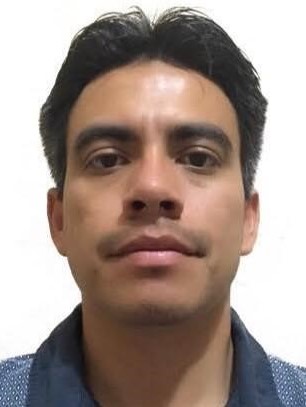 DANNY ALEX LACHOS PEREZ
DANNY ALEX LACHOS PEREZ
Danny Lachos has a particular interest in new and flexible network and application integration mechanisms in the context of multi-domain environments. Currently working as a Senior Network Engineer at Benocs. Founded in 2013, Benocs offers intelligent traffic optimization and analytics solutions for operators and large network providers. He received his Ph.D. and M.Sc. degree in Computer Engineering from the University of Campinas (UNICAMP), Brazil, in 2021 and 2016, respectively. During this time, He was involved as a software and Internet researcher in different academy-industry collaboration projects related to networked systems (e.g., 5G, SDN, NFV, data center networking, Internet routing). He holds a Computer Engineering degree from Pedro Ruiz Gallo University (UNPRG), Peru.
IP 10: NEXTG SYSTEM RESILIENCY IMPROVEMENTS THROUGH END-TO-END ANALYTICS (BY MITRE LABS)
MONDAY, DEC 5 16:30 - 17:00 / LOCATION: Oceania IV
Abstract:
The minimum technical performance requirements as specified in REPORT ITU-R M.2410 does not include resiliency as a requirement for 5G technologies. However, to support mission critical application, NextG/6G technologies must provide resiliency guarantees. In this talk, we provide a meaningful way to define and measure resiliency and argue that standardization bodies need to include resiliency requirements in minimum technical performance requirements from NextG/6G (IMT 2030). We will start by highlighting some important characteristics of highly resilient systems and argue that adding network situational awareness will improve overall system resiliency. We will then talk about some of the analytics framework specified by the 3GPP and how they can be utilized and enhanced to provide end-to-end situational awareness and connected intelligence. Finally, we will illustrate, using a real-world use-case involving mobile edge computing, how the ideas presented in this talk can be applied to realize resiliency improvements.
Biography:
 VENKATESH RAMASWAMY
VENKATESH RAMASWAMY
Dr. Venkatesh Ramaswamy is Chief Technologist at MITRE Labs in Bedford, Massachusetts where he currently leads technical innovation and R&D activities in 5G/xG technologies. He has more than 20 years of experience in the telecommunications industry and has held technical leadership positions at top technology companies, startups and research labs. He has published more than 50 peer-reviewed publications and patents, served as a TPC member for various conferences, and participated in several technical panels. He received his PhD in Electrical Engineering from the University of Mississippi.
IP 17: GENERATIVE NETWORK PERFORMANCE PREDICTION WITH NETWORK DIGITAL TWINS (BY NOKIA BELL LABS)
MONDAY, DEC 5 17:00 - 17:30 / LOCATION: Oceania IV
Abstract:
The presentation is about a solution to improve and streamline industrial private wireless network performance predictions using generative digital twin models. There are several open problems in designing, delivering, and maintaining private wireless networks for autonomous industrial settings. In these dynamic environments with changing use cases and SLA profiles, immediate detection of performance problems becomes critical. The existing instrumentation methods proven useful for public networks are not as effective for maintaining these private industrial networks, where use-case-dependent performance prediction becomes a necessity. The described solution builds on the existing Nokia Digital Twin platform used for continuous testing and SLA management of 5G networks for industrial automation. The solution first builds an association between the field measurements and the digital representations of the environment by making use of Deep Neural Network (DNN) techniques. Then in subsequent steps, Generative Adversarial Network (GAN) methods are used to create what-if scenarios with alternate equipment and layout configurations to examine potential concerns, and to explore options towards more optimal performance outcomes.
Biography:
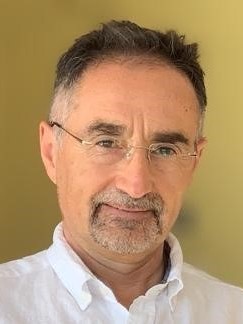 BILGEHAN ERMAN
BILGEHAN ERMAN
Bilgehan is a Researcher at the Network Systems and Security Research organization at Nokia Bell Labs. Bilgehan’s areas of interests include cognitive network control, network control models with embodied intelligence, network transformation at the edge, mesh networks, and high-dimensional real-time visualization. He holds MS degree in Computer Engineering and BS degree in Electrical Engineering both from METU at Ankara Turkey. Bilgehan has seventeen granted/applied patents
IP 18: EVOLVING CRYPTOGRAPHY (BY WILAN, PI INVENT ENTERPRISES)
TUESDAY, DEC 6 8:00 - 8:30 / LOCATION: Oceania IV
Abstract:
Global cybercrime is expected to reach 10.5 trillion USD by 2025 with an annual increase of 15 percent from 3 trillion USD in 2015. As communication technology evolves and the world gets more connected, the need for securing network communications is ever increasing. Cryptographic Algorithms, such as AES and RSA, are widely used to secure two-way communications between clients and servers on the internet and are also ubiquitous in high security applications such as credit cards, military communications etc. AES is still considered secure even when it is published, as long as the private key is kept secure. However, if an attacker obtains the private key, the security is compromised and may stay compromised for a long time until the user detects this breach and then changes the key. We present a novel approach to cryptography through which the modules of an algorithm such as Confusion, Diffusion, and KeyMixing etc. are evolved to produce cryptographically secure Customized Encryptors. These evolutionary encryption methods maintain security even after the encryption key has been compromised. At least one parameter or a transformation (Confusion Box/ Diffusion Box/ Key Mixing/ Round Logic) may be modified periodically in an encryption algorithm to temporally evolve its behavior by creating a genetically modified variant of the original algorithm. This reduces an attacker's awareness of the structure and operation of encryption algorithm by adding security in the behavior dimension independent of the key. Modifications may be event based, for instance, at the start of a new communication session, periodic, every few milliseconds, or based on a counter of few bytes of data passed. By evolving AES 128, our solution provides a cryptographic strength of 2908 bits while running at a fraction of the processing power of AES 256 that only provides 256 bits security.
Biography:
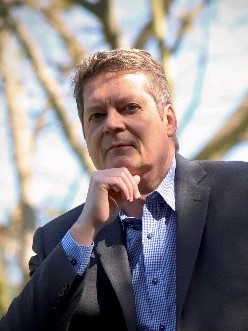 Kenneth Stanwood
Kenneth Stanwood
Kenneth Stanwood is Chief Technical Officer of WiLAN Inc. He is a senior member of IEEE. He is an inventor and entrepreneur with more than 150 issued US patents and numerous foreign counterparts. He supports WiLAN’s technology licensing teams, is responsible for WiLAN’s government relations efforts, and is responsible for WiLAN’s university tech transfer project. However, his primary responsibility is WiLAN’s internal research and development which is heavily oriented towards collaboration with universities. Mr. Stanwood has more than 35 years of experience in wireless communications and signal processing. He has participated in IEEE 802 standards development, including serving as vice-chair of IEEE 802.16 (WiMAX). Mr. Stanwood holds a Bachelor of Science in Mathematical Sciences with Highest Honors from Oregon State University and a Master of Science in Computer Science from Stanford University.
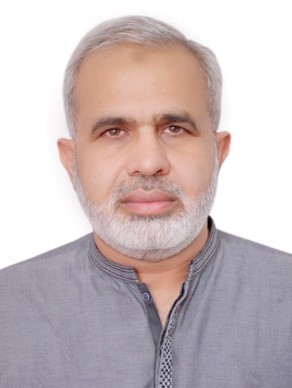 Rashad Ramzan
Rashad Ramzan
Rashad Ramzan (S’04–M’09–SM’11) received the B.Sc. degree from the University of Engineering and Technology, Lahore, Pakistan, M.Sc. degree from the Royal Institute of Technology, Stockholm and the Ph.D. degree from Linkoping University, Sweden, in 1994, 2003, and 2009, respectively, all in electronics engineering. He has been involved in research and development throughout his professional career in industry and academia. He has authored over 80 journals, US patents, & conference papers. One of his designed LNA was published in ISSCC 2007. He is a recipient of the two best paper awards and two chancellor innovation awards. He co-founded a startup company in 2009. He is founder an IC Design (ICD) lab in 2018 and 1st MS IC Design Program in Pakistan. Currently, he is Professor of Elect. Engineering, Director of ICD lab at EE department, and CEO of Pi Invent, a company working in 5G/6G IC design technologies. His research interests are Analog & Mixed Circuit IC Design, RFIC Design, 5G/6G Radio Circuits, VLSI Design, Ultra Low Power Circuits, Energy Tunneling, Bio-Sensors, Wireless Power Transfer Circuits and Sensors.
IP 19: MM-WAVE DUPLEXER AND MODULATOR FOR ON CHIP INTEGRATION (BY WILAN)
TUESDAY, DEC 6 8:30 - 9:00 / LOCATION: Oceania IV
Abstract:
Duplexers are selective components used to isolate or combine signals having different central frequencies. They form the essential core components of FDD communication systems, comprised of mobile telephony, radio transmission, broadband wireless communications and satellite communication systems. The 5G/6G market is expected to grow to more than 30 Billion USD by 2025. High performing duplexers are essential devices which will be widely used in these systems and are required to operate at very high throughputs in the mm-Wave bands. This 3-port filtering device provides good isolation between transmitter and receiver signals while maintaining a low insertion loss. Generally, the duplexers consist of two-channel filters and a common point is used to combine the two filters to form a multiport network. These duplexers provide a mechanism for transmitters and receivers to share a common antenna simultaneously. The antenna operates at both bands and the duplexer allows simultaneous communication with maximum isolation between the TX and RX bands. As the mm-Wave band is getting more attention for 5G communications, duplexers are needed for 28-32 GHz band. Depending on the application scenario, the passbands for these might require wide bandwidth for higher data rates, or a narrow bandwidth for high frequency selectivity. A set of on-chip duplexers that can fulfill both these criteria for the mm-Wave band (28-30 GHz), by leveraging the Fano, EIT, and Lorentz resonance phenomena are presented. Such duplexers can be used for 5G/6G communication systems.
Biography:
 Kenneth Stanwood
Kenneth Stanwood
Kenneth Stanwood is Chief Technical Officer of WiLAN Inc. He is a senior member of IEEE. He is an inventor and entrepreneur with more than 150 issued US patents and numerous foreign counterparts. He supports WiLAN’s technology licensing teams, is responsible for WiLAN’s government relations efforts, and is responsible for WiLAN’s university tech transfer project. However, his primary responsibility is WiLAN’s internal research and development which is heavily oriented towards collaboration with universities. Mr. Stanwood has more than 35 years of experience in wireless communications and signal processing. He has participated in IEEE 802 standards development, including serving as vice-chair of IEEE 802.16 (WiMAX). Mr. Stanwood holds a Bachelor of Science in Mathematical Sciences with Highest Honors from Oregon State University and a Master of Science in Computer Science from Stanford University.
 Rashad Ramzan
Rashad Ramzan
Rashad Ramzan (S’04–M’09–SM’11) received the B.Sc. degree from the University of Engineering and Technology, Lahore, Pakistan, M.Sc. degree from the Royal Institute of Technology, Stockholm and the Ph.D. degree from Linkoping University, Sweden, in 1994, 2003, and 2009, respectively, all in electronics engineering. He has been involved in research and development throughout his professional career in industry and academia. He has authored over 80 journals, US patents, & conference papers. One of his designed LNA was published in ISSCC 2007. He is a recipient of the two best paper awards and two chancellor innovation awards. He co-founded a startup company in 2009. He is founder an IC Design (ICD) lab in 2018 and 1st MS IC Design Program in Pakistan. Currently, he is Professor of Elect. Engineering, Director of ICD lab at EE department, and CEO of Pi Invent, a company working in 5G/6G IC design technologies. His research interests are Analog & Mixed Circuit IC Design, RFIC Design, 5G/6G Radio Circuits, VLSI Design, Ultra Low Power Circuits, Energy Tunneling, Bio-Sensors, Wireless Power Transfer Circuits and Sensors.
IP 22: The Path Towards 6G: From Millimeter Waves to THz
TUESDAY, DEC 6 9:00 - 9:30 / LOCATION: Oceania IV
Presenter:
Abstract:
Sub-Terahertz and terahertz (THz) waves have frequencies extending from 0.1 THz up to 3 THz and fall in the spectral region between microwave and optical waves. The prospect of offering large contiguous frequency bands to meet the demand for highest data transfer rates up to the terabit/sec range make it a key research area of 6G mobile communication. In light of the approaching ITU WRC23, academic and industrial research is striving to demonstrate the feasibility of this frequency region for communication. This talk highlights the required interdisciplinary approach, with close interaction of high-frequency semiconductor technology for RF electronics but also including alternative approaches using photonic technologies. Besides the use for generating THz radiation, photonic technologies can also provide a means for generating microwave signals with ultra-low phase noise based on a frequency comb laser which can also be used for calibration purposes. To fully exploit the potential of the new frequency ranges it is also crucial to understand the propagation characteristics for the development of the future communication standards by performing channel measurements. We will highlight the characteristics of channel propagation in this frequency region and present results from channel measurement campaigns in the D-band and H-band.
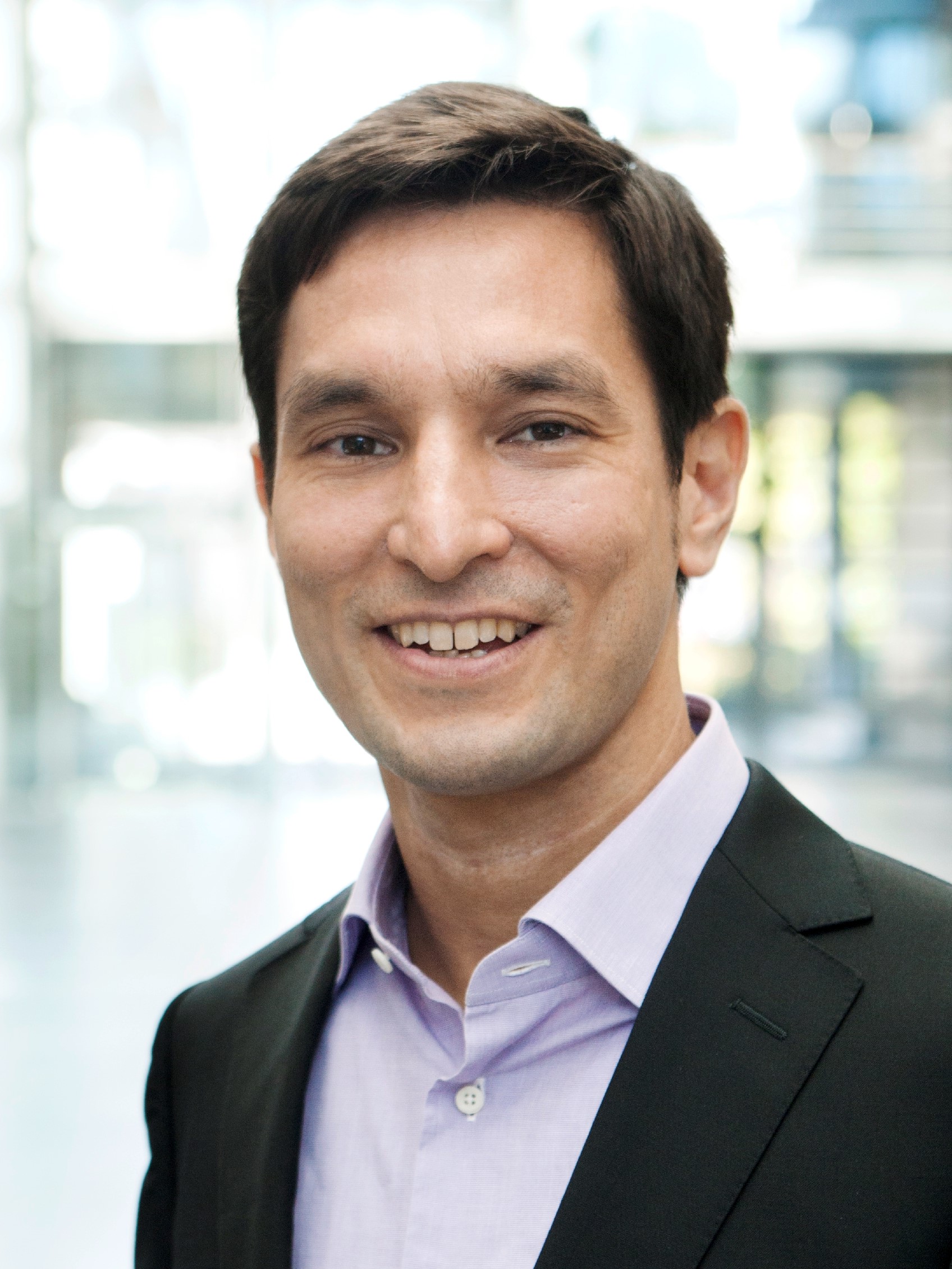 TARO EICHLER
TARO EICHLER
Taro Eichler is Technology Manager for wireless communications and photonics at Rohde & Schwarz in Munich with a focus on 5G/6G technologies. With 15 years of experience in wireless communication, he is currently working on 6G industry research projects covering sub-THz communication, photonics and reconfigurable intelligent surfaces (RIS). Prior to joining Rohde & Schwarz, Taro worked for Intel Corporation as specialist for photonic communication solutions and for NTT Basic Research Laboratories. He also worked on research projects at The University of Tokyo in the field of quantum optics. He holds a diploma in physics from the Technical University of Munich with thesis at the Max-Planck-Institute for Quantum Optics and a Ph.D. in physics from the University of Bonn, Germany.
IP 6: TESTING CONSIDERATIONS FOR AI AND ML IN WIRELESS NETWORKS (BY KEYSIGHT)
TUESDAY, DEC 6 14:00 - 14:30 / LOCATION: Oceania IV
Abstract:
Artificial Intelligence (AI) and Machine Learning (ML) are core technologies that will pervasive and expansive in 6G. Thinking about how to test AI/ML communications systems present new challenges compared to traditional methods. There are 3 different types of AI/ML testing to consider—datasets (recorded from real world scenarios or artificially generated) are needed to train the AI/ML, AI/ML based test can be applied to wireless networks (for example, an AI/ML based signal identification), and finally testing to look at the performance of the AI/ML algorithm itself at a subcomponent level and at a system level. This session will dive into each of these three areas with a goal to leave attendees with a better understanding what test and validation means for AI and ML in wireless systems.
Biography:
.jpg) SARAH LASELVA
SARAH LASELVA
Sarah leads the marketing efforts for Keysight in 6G. She has over a decade of experience in test and measurement concentrating on wireless communications, both studying and promoting the latest wireless technologies. Throughout her career she has spent time in marketing, test engineering, and applications engineering. Prior to joining Keysight, Sarah worked as a product marketing manager for software defined radios with a focus on advanced wireless research. During this time, she gained a deep knowledge of prototyping hardware, software, and wireless communications. Sarah’s background is in microwave and millimeter wave technology. She has a BS in electrical engineering from Texas Tech University.
IP 20: PHYSICAL LAYER SECURITY SYSTEMS FOR 5G/6G COMMUNICATION DEVICES (BY WILAN)
TUESDAY, DEC 6 14:30 - 15:00 / LOCATION: Oceania IV
Abstract:
Random Numbers are needed to generate the essential seed for encryption in secure communication systems. If the randomness of the seed is compromised, this may eventually load to comprising the entire encryption method. The global cybercrime is expected to reach up to 10.5 Trillion USD by 2025. Furthermore, the demand for high rates of random numbers is also increasing as several billion IoT devices are getting connected to the Internet. A True Random Number Generator (TRNG) extracts entropy from physical phenomenon rather than mathematical algorithms like a PRNG, hence it is more reliable for seed generation. The state-of-the-art TRNGs are either limited in speed (up to 1.5 to 2 Gbps) or require very high power for high data rates (up to 200 mW) due to high static power consumption. However, high speed and low power are highly desirable in the next generation of 5G/6G communication systems and IoT applications.
Biography:
 Kenneth Stanwood
Kenneth Stanwood
Kenneth Stanwood is Chief Technical Officer of WiLAN Inc. He is a senior member of IEEE. He is an inventor and entrepreneur with more than 150 issued US patents and numerous foreign counterparts. He supports WiLAN’s technology licensing teams, is responsible for WiLAN’s government relations efforts, and is responsible for WiLAN’s university tech transfer project. However, his primary responsibility is WiLAN’s internal research and development which is heavily oriented towards collaboration with universities. Mr. Stanwood has more than 35 years of experience in wireless communications and signal processing. He has participated in IEEE 802 standards development, including serving as vice-chair of IEEE 802.16 (WiMAX). Mr. Stanwood holds a Bachelor of Science in Mathematical Sciences with Highest Honors from Oregon State University and a Master of Science in Computer Science from Stanford University.
 Rashad Ramzan
Rashad Ramzan
Rashad Ramzan (S’04–M’09–SM’11) received the B.Sc. degree from the University of Engineering and Technology, Lahore, Pakistan, M.Sc. degree from the Royal Institute of Technology, Stockholm and the Ph.D. degree from Linkoping University, Sweden, in 1994, 2003, and 2009, respectively, all in electronics engineering. He has been involved in research and development throughout his professional career in industry and academia. He has authored over 80 journals, US patents, & conference papers. One of his designed LNA was published in ISSCC 2007. He is a recipient of the two best paper awards and two chancellor innovation awards. He co-founded a startup company in 2009. He is founder an IC Design (ICD) lab in 2018 and 1st MS IC Design Program in Pakistan. Currently, he is Professor of Elect. Engineering, Director of ICD lab at EE department, and CEO of Pi Invent, a company working in 5G/6G IC design technologies. His research interests are Analog & Mixed Circuit IC Design, RFIC Design, 5G/6G Radio Circuits, VLSI Design, Ultra Low Power Circuits, Energy Tunneling, Bio-Sensors, Wireless Power Transfer Circuits and Sensors.
IP 21: THE FUTURE ROLE OF AI/ML IN WIRELESS COMMUNICATION? A TEST&MEASUREMENT PERSPECTIVE? (BY ROHDE & SCHWARZ)
TUESDAY, DEC 6 15:00 - 15:30 / LOCATION: Oceania IV
Presenter:
Abstract:
Artificial intelligence (AI) in the form of machine learning (ML) accompanies the user of a state-of-the-art wireless device daily. It has achieved tremendous success in image identification, video recognition and natural language processing, to name just a few examples. However, for the next generation of wireless communication, aka 6G, researchers propose AI/ML models and algorithms that natively drive the air interface by replacing individual or even multiple blocks of the signal processing chain. An AI-native interface with self-optimizing transceivers would, at least in theory, provide significant performance gains even under extreme radio channel conditions. Yet this potential revolution also implies substantial challenges from a design and testing perspective. In this presentation, we will introduce the attendees to the ongoing fundamental research, discuss related challenges and how test and measurement solutions can accompany this research.
Biography:
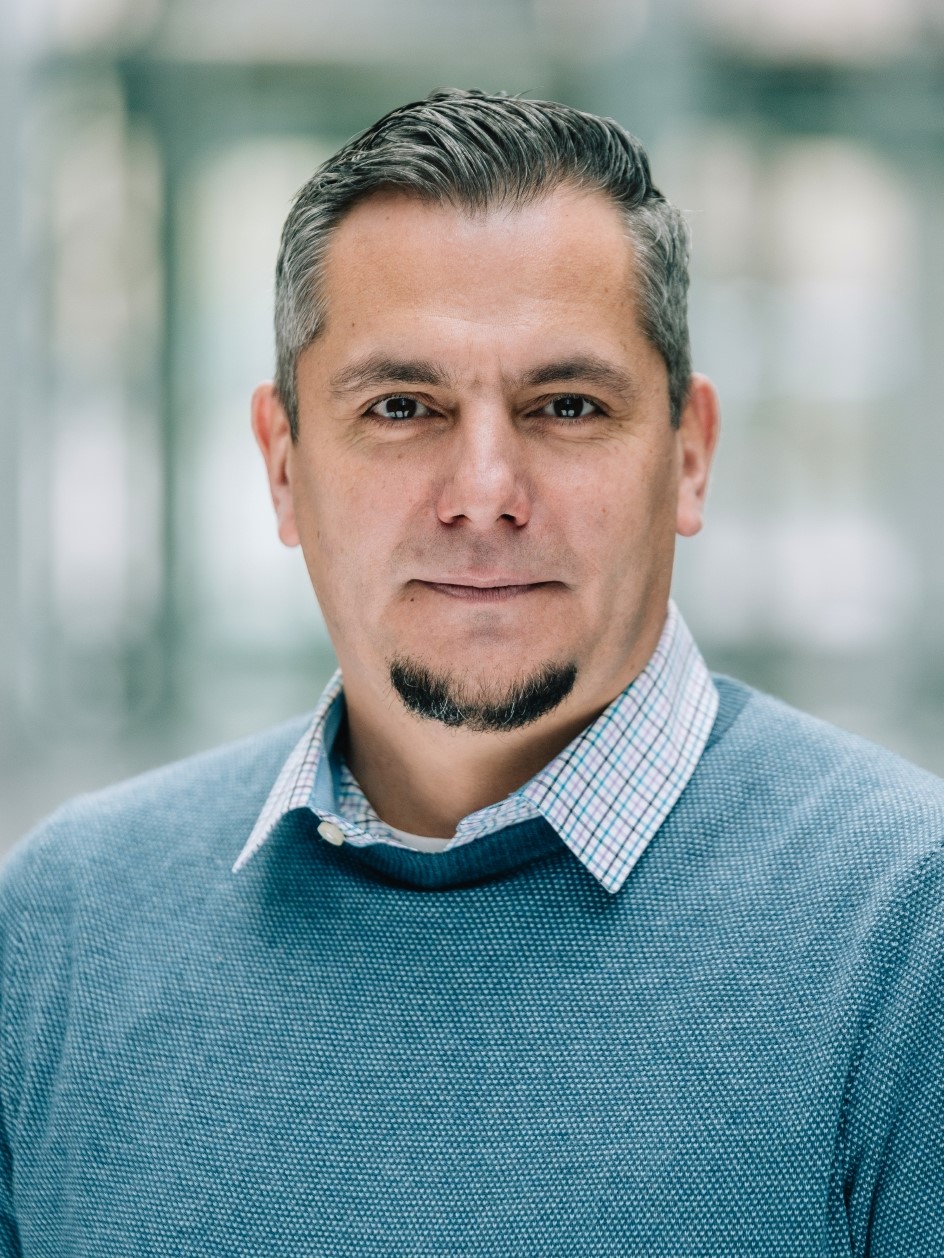 Andreas Roessler
Andreas Roessler
Andreas Roessler is working as a Technology Manager for Rohde & Schwarz, a premium supplier of test and measurement solutions to the wireless industry, headquartered in Munich, Germany. As a technology manager, he focuses on 3GPP?s 5G New Radio (NR) standard and advancing 6G research topics. His responsibilities include strategic marketing and product portfolio development for the entire value chain offered by Rohde & Schwarz test and measurement division. By carefully following industry trends and the standardization process for cellular communication standards, he gained more than 15 years of experience in the mobile industry and wireless technologies. He holds an MSc in electrical engineering with a focus on wireless communication.
IP 5: 5G/6G ORAN ENABLES RADIOS EVERYWHERE (BY ANALOG DEVICES)
WEDNESDAY, DEC 7 8:00 - 8:30 / LOCATION: Oceania IV
Abstract:
The disaggregation of the cellular network is intended to open the architecture and drive more innovation for the different layers of hardware and software. An additional benefit is the ability to scale different Radio Units for different applications while still following the common front-haul interface to the Distribution Units. The split option 7-2x has emerged as an excellent compromise that combines the RF radio with the Low-Phy in the RU while the MAC and High-Phy remain on the DU. The deployment flexibility and interoperability of the network means that automobiles, drones, IoT, satellite ground stations, et. al. can also plug in to the cellular network for full, seamless connectivity. The open hardware philosophy implies open software development, which would include algorithms that assist and optimize the hardware and that serve edge applications.
Biography:
 John Cowles
John Cowles
John Cowles has worked at Analog Devices for over 24 years. He has held numerous technical, supervisory, business and strategy leadership roles within ADI. He has a broad technical background in semiconductors and system level design and enjoys tacking challenging customer problems. In his current role as Senior Director of Technology, he works closely with other technologists and strategy leaders across ADI to define future needs and investment priorities. John earned his BSEE in 1987 from the University of Pennsylvania and MS and PhD in EE in 1989 and 1994 from the University of Michigan. John was born in São Paulo, Brazil.
 Peadar Forbes
Peadar Forbes
Peadar Forbes is responsible for radio reference design development in the Communications Business Unit at Analog Devices. Prior to this he has worked in applications, systems engineering and marketing roles on Analog Devices communications products. Peadar holds a degree in Electrical Engineering from University College Cork and an MBA from the University of Limerick.
 Brad Brannon
Brad Brannon
Brad Brannon has worked for Analog Devices since 1984 at the Greensboro site after graduating from North Carolina State University. Since that time, he has held a number of positions including Design, Test, Applications and Systems. Currently Brad is a System Architect working with our O-RAN partners and customers and is an active contributor to the Whitebox Workgroup in O-RAN (WG7).
IP 23: Network QoS Prediction for Optimized Edge Cloud Offloading (BY BOSCH)
WEDNESDAY, DEC 7 8:30 - 9:00 / LOCATION: Oceania IV
Presenter:
Abstract:
We present the concepts and evaluation of network Quality of Service (QoS) prediction for Autonomous Guided Vehicle (AGV) applications, with special focus on optimizing the edge cloud offloading decisions for Vision-Based Positioning (VBP) applications. An optimized edge cloud offloading of VBP applications implies their dynamic placement and movement between the device and the edge cloud, according to the available network QoS. Such re-placement operations are not instantaneous: reserving the required resources and redirecting traffic flows take some time. Therefore, we present how the network QoS can be predicted in AGV applications for non-guaranteed bitrate (non-GBR) QoS flows and how these predictions can be used to optimize the edge cloud offloading decisions. We also show how these concepts have been evaluated with a 5G network deployed in a real operational factory environment. Namely, the collected and processed data have been used to develop and evaluate ML algorithms for prediction and offload decision making. We conclude by presenting the obtained results and demonstrating how the QoS prediction can improve the edge cloud offloading orchestration performance.
Biography:
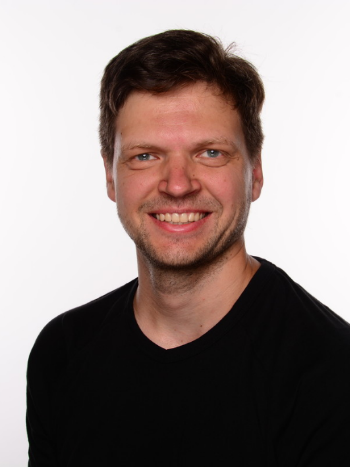 Nikolaj Marchenko
Nikolaj Marchenko
Nikolaj Marchenko received PhD in Information Technology from Klagenfurt University (Austria) in 2014, and Diploma Degree in Computer Engineering from RWTH Aachen University in 2007. He is currently a Research Engineer at Bosch Corporate Research in Renningen, Germany, where he leads research projects on 5G communication for Industry 4.0 with focus on URLLC communication and use of ML for network optimization. He is also actively involved in the ecosystem and business development of Industrial IoT within and outside Bosch.
IP 24: Indoor Positioning in Industrial Wireless Networks (BY Siemens)
WEDNESDAY, DEC 7 9:00 - 9:30 / LOCATION: Oceania IV
Presenter:
Abstract:
We tackle the problem of indoor positioning in industrial scenarios and show how ML can assist in such operation. First, we introduce the possible sources of positioning information from radiofrequency networks and brief review and compare state-of-the-art techniques for indoor localization that use such information sources. We highlight the main goals and challenges when deploying and operating a wireless network that provides positioning information. This leads us to a set of objectives and constraints that any real network must carefully consider. We then present and describe our experimental setup, consisting of a large office room and a smaller industrial lab with evenly distributed Bluetooth beacons, fixed receivers, and mobile equipment. We also discuss propagation statistics and challenges that such indoor environments involve. Afterwards, we describe our ML-based positioning techniques and compare it to less accurate or more expensive existing techniques. We provide a summary of our experimental results and a comparison with existing state-of-the-art techniques. Finally, we conclude the talk by presenting opportunities to improve the proposed techniques along with planned future steps, so as to encourage follow-up discussions with interested attendees.
Biography:
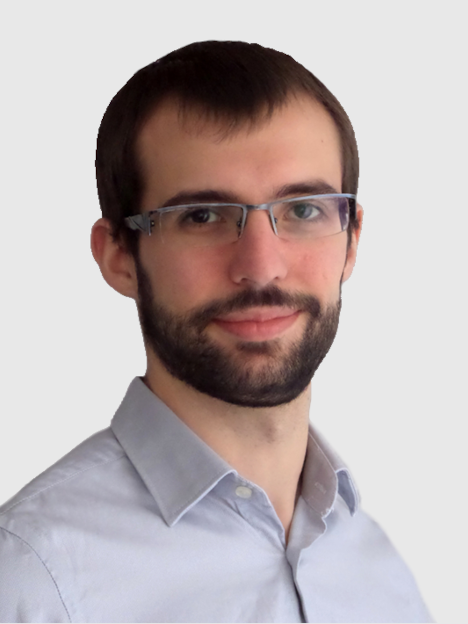 Alberto Martínez Alba
Alberto Martínez Alba
Alberto Martínez Alba received his Bachelor’s and Master’s degrees in Telecommunication Engineering from the Technical University of Madrid (Spain) and his Ph.D. degree in Communication Engineering from the Technical University of Munich (Germany). In 2021, he joined Siemens AG as a research scientist. His current research interests include the design, optimization, and implementation of flexible next-generation mobile networks and the development of indoor positioning techniques.
IP 7: HOW TO MAKE MACHINES SMART ENOUGH FOR AUTONOMOUS OPERATION (BY ERICSSON)
WEDNESDAY, DEC 7 14:00 - 14:30 / LOCATION: Oceania IV
Abstract:
An autonomous operation system with serious zero-touch capabilities needs to be intelligent enough to make the right decisions. It needs to understand the consequences and utility of its actions and adapt sensibly to new and unforeseen situations. A machine with these capabilities is challenging to design. In this presentation, we will discuss the requirements for capable and trusted autonomous systems, technologies for implementing this level of intelligence and the important role of intents and its modelling for the realization of this vision.
Biography:
 Jörg Niemöller
Jörg Niemöller
Jörg Niemöller is an analytics and customer experience expert in Solution Area OSS. He joined Ericsson in 1998 and spent several years at Ericsson Research, where he gained experience working with machine-reasoning technologies and developed an understanding of their business relevance for autonomous zero-touch operation. He is currently driving the introduction of these technologies into Ericsson’s portfolio of Operations Support Systems/Business Support Systems solutions. Jörg is also the author of the suite of guidebooks and models for intents published by TM Forum.
Jörg Niemöller holds a Ph.D. in computer science from Tilburg University, the Netherlands, and a diploma degree in electrical engineering from the TU Dortmund University, Germany.
IP 14: NETWORK DIGITAL TWIN: IN-PRODUCTION TESTING & SLA-DRIVEN NETWORKING FOR INDUSTRIAL WIRELESS NETWORKS (BY NOKIA BELL LABS)
WEDNESDAY, DEC 7 15:00 - 15:30 / LOCATION: Oceania IV
Abstract:
Uninterrupted and high-quality data communication is one of the most important prerequisites for implementing OT (Operation Technology)-grade private wireless like LTE and 5G NR for industrial automation. Such networks are expected to enable operations 24/7 in the covered area with given network service level agreements (SLA), e.g., bandwidth and latency requirements that are use-case specific. One of the main challenges in designing 5G industrial networks is that the network conditions might change drastically over a short time due to a variety of factors, including moving parts, changes in the factory floor layout, and stored goods temporarily affecting the wireless signal. Motivated by the complexity and variety of current factory use cases, this proposes a new platform enabling continuous testing and SLA management of wireless networks that enables: i) the creation and management of SLA definitions for each connected device through a custom-built SLA compiler, ii) all the automation needed to continuously test the network continuously, according to the defined SLAs, and iii) an adaptation engine that is capable of reallocating software resources on the edge (e.g., docker containers or Kubernetes pods) according to the programmed SLA. The platform, called Network Digital Twin enables the monitoring of any network in real time and can predict reconfiguration actions and potential downtime in advance. The merit of the proposed platform is to be able to provide a virtual representation of the communications requirements, along with its operating environment and real network capabilities. The presentation includes experimental results obtained from several use cases in real industrial settings. Results show that the platform can substantially reduce the testing cost and enable new use cases, like AGV (Autonomous Guided Vehicle) and drone-driven automated network testing as a service.
Biography:
%20Di%20Martino.jpg) Catello Di Martino
Catello Di Martino
Catello Di Martino is the Head of the Network Application Department at Nokia Bell Labs. He joined Bell Labs in Murray Hill, NJ, USA in 2015. Before that, he worked at University of Illinois at Urbana-Champaign as research associate. He holds a PhD in computer Engineering from University of Naples Federico II. Catello holds a successful track record of a number of research projects in the area of industrial internet of things, data-intensive systems, highly resilient large-scale clouds, 5G networks and supercomputing. His career path touched several countries (Italy, Portugal, US, Brazil and India) and his operations extend to several regions (LAT, NAM, and Europe).
IP 2: MULTI-CLOUD DEPLOYMENT OF 5G NETWORKS WITH PROACTIVE AND POLYMORPHIC ORCHESTRATION (BY IS-WIRELESS)
VIRTUAL
Abstract:
Motivation of the presentation: The complexity of multi-cloud and edge deployment of 5G raises many challenges related to an efficient deployment across different cloud domains (public and private) as well as how to optimally adapt to changing workloads and application's requirements. The MORPHEMIC platform provides a novel approach of adapting and optimizing cloud and edge computing applications by introducing the concepts of polymorphic and proactive adaptation. The description of the Cloud and Edge applications is enclosed in a very expressive Cloud Application Modelling and Execution Language (CAMEL) formalism allowing for definition of deployment requirements, as well as utility-based deployment optimisation. The objective of this demo is to showcase an example of deploying 5G as a form of disaggregated radio access network (RAN) in the intelligent multi-cloud environment by using the Morphemic platform. Context of the presentation: The industrial presentation will start by providing a technical background behind intelligent multi-cloud deployment of 5G networks. The economic justification of disaggregated 5G and several aspects of Open RAN deployment in the multi-cloud environment of 5G will be provided to reflect the benefits of the MORPHEMIC platform. Moreover, a vision of multi cloud deployment of the RAN components (e.g., RU/DU/CU) will be presented and the deployment is fueled by utility-based optimization as well as AI based prediction mechanism harnessed into a proactive adaptation scheme. This part of the will also addresses both the challenges and the approach related to multi-cloud deployment of 5G networks. A practical demonstration by providing a glimpse into the real deployment of the 5G RAN components in the multi-cloud environment, the role of the orchestrator to provision the RAN will be the key elements of the presentation.
Biography:
 Robert Gdowski
Robert Gdowski
Robert Gdowski is currently working in IS-Wireless as a Senior R&D Engineer dealing with Network Function Virtualization and Orchestration topics. He manages the work in the H2020 Morphemic project within the company. Previously he worked as a researcher at Industrial Technology Research Institute (ITRI) in Taiwan being involved in the 5G-CORAL project, an EU-Taiwan collaboration, focusing on architectural convergence of MEC, NFV and MANO systems. Robert obtained his Ph.D. in Electrical Engineering from National Chiao Tung University. His research interests include real-time system virtualization, K8s based O-RAN workload orchestration, ETSI NFV and MANO.
IP 3: CELL-FREE MMIMO SUPPORT IN THE O-RAN ARCHITECTURE TO IMPROVE THE PERFORMANCE FOR FUTURE 6G NETWORKS (BY IS-WIRELESS)
Abstract:
Communication by joint precoded transmission from many distributed radio units (RUs), called cell-free massive multiple-input multiple-output (CF mMIMO), is a promising concept for future 6G networks. The CF mMIMO architecture is showing huge potential in terms of improving the spectral efficiency (SE) and energy efficiency. The emerging CF mMIMO network architectures target dense deployments providing extreme flexibility in allocating resources to users. One of the key challenging aspects of CF mMIMO is to efficiently manage radio resources to maximize the KPI's of the networks. In parallel, the open Radio Access Networks (RAN) paradigm transforms the RAN towards virtualized, fully interoperable and intelligent architecture. In this presentation, we will highlight the current O-RAN ALLIANCE terminology and link it up with common CF mMIMO terminology used in the several research literatures. We will discuss the main O-RAN innovations to enable CF mMIMO and suggest several deployment options of CF mMIMO by utilizing O-RAN split 7.2x. To exploit the O-RAN entities optimally, and meet diverse requirements of future communication systems, 6G will provide enhanced flexibility through the dynamic scheduling of the available resources. Given the densification of networks, and the introduction of cell-free mMIMO architecture, the availability of RAN resources is unseen, and is only limited by the potential of the resource allocation methods. In this industrial presentation talk, we will provide a brief overview of practical aspects of the radio resource scheduling algorithm implementations providing a clear insight in the remaining challenges and innovation needed to implement CF mMIMO from theory to practice.
Biography:
 Adam Girycki
Adam Girycki
Adam Girycki holds the position of R&D Expert within the company and particularly expertise in the field of 2G, 3G, 4G and 5G Radio Network Design, Signalling and Radio Network Optimisation. Currently, he has also enrolled in a joint PhD degree programme with Katholieke Universiteit Leuven (KUL), Belgium and developing machine learning-based radio resource allocation algorithm for cell-free mMIMO networks. He graduated in Technical Physics (1994) from the Silesian University of Technology in Gliwice, Poland. Completed PhD studies in Electronic and Telecommunications (1998). Since 1999 has been a certified technical instructor of Ericsson. In 2002 established ENKI telecom training company. Training developer, i.e., an author of training documentation. Have conducted telecommunications training in 34 countries on 4 continents.
IP 4: The KICK project - applying artificial intelligence for campus wireless communications (BY NOKIA)
Abstract:
We introduce the German funded project KICK (which stands for Künstliche Intelligenz für Campus-Kommunikation, Artificial Intelligence for Campus-Communication). Following the project structure, we present our approach to network management for wireless campus networks, namely both the “tactical” (medium time scale) and “operational” (short/real time scale) management. We raise some of the most interesting research challenges in the context of private wireless networks and show how we approached them in the KICK project. Then, we discuss some insights on how to optimize the resource allocation and the network slicing configuration in private networks, based on the specific production activities and status of the machines. We propose a ML-based approach and show how reinforcement learning and transfer learning can enable automatic and optimal network slicing configuration and operation. By feeding our algorithms with both network KPIs (key performance indicators) and production information, we achieve faster convergence time and better performance in terms of resource utilization. Finally, we present the simulation platform developed in the context of KICK. This simulator is, to the best of our knowledge, the first of its kind combining both network functionalities (simulating a 4G/5G indoor campus network) and industrial process (by simulating specific machines and production activities).
Biography:
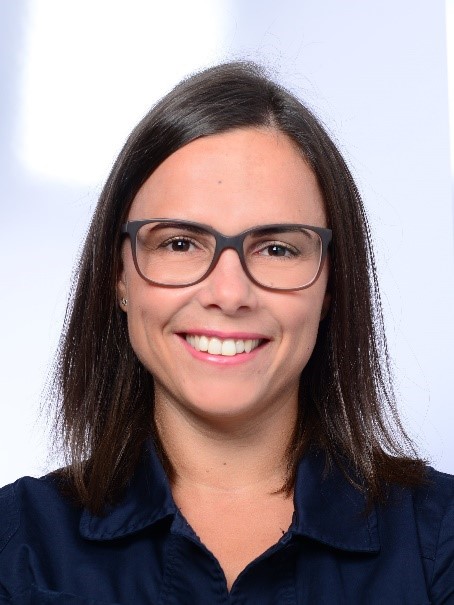 Ilaria Malanchini
Ilaria Malanchini
Ilaria Malanchini is a Senior Research Engineer at the Network Systems and Security Research Lab and has been with Bell Labs Stuttgart since 2012. She received B.S. and M.S. degrees in telecommunications engineering from Politecnico di Milano, Italy, in 2005 and 2007, respectively, and a Ph.D. in electrical engineering from Drexel University, Philadelphia, and Politecnico di Milano in 2011. Ilaria was awarded the Meucci-Marconi Award and the Chorafas Foundation Prize for her Master and PhD thesis, respectively. She published more than 35 peer reviewed journal and conference papers and has more than 10 granted or filed patents. Her research interests focus on optimization models, mathematical programming, game theory, and machine learning, with the application of these techniques to wireless network problems such as resource allocation, resource sharing, and network slicing. Currently, she is project coordinator for the German-funded project KICK.
IP 8: Retrospect and Prospect on Solutions and Evolution of Integrated mm-Wave and Non-mm-Wave Antennas for Mobile Phones of 5G and Beyond (BY VISIONOX)
VIRTUAL
Presenter:
Abstract:
As it is known, for 5G (the 5th generation mobile communications), there are two frequency segments, the millimeter-wave (mm-wave) one and the micro-wave (i.e., non-mm-wave) one; also, antennas are crucial to the wireless communication performance. Currently, in 5G mobile phones, the mm-wave and non-mm-wave are separate and the antenna numbers are much more than those in 4G mobile phones. To reduce the occupied volumes by antennas in 5G phones, the integrations of mm-wave and non-mm-wave antennas to achieve the total solution of 5G antennas to enhance competitiveness of mobile phones have attracted strong and wide interest and researches from the industry and academia. In this presentation, several innovative and inspiring integration solutions (including the module type, FPC type, exterior type, and display type) of mm-wave and non-mm-wave antennas are systematically retrospected and prospected. Furthermore, the integration evolution is also analyzed to benefit and enlighten the future developments.
Biography:
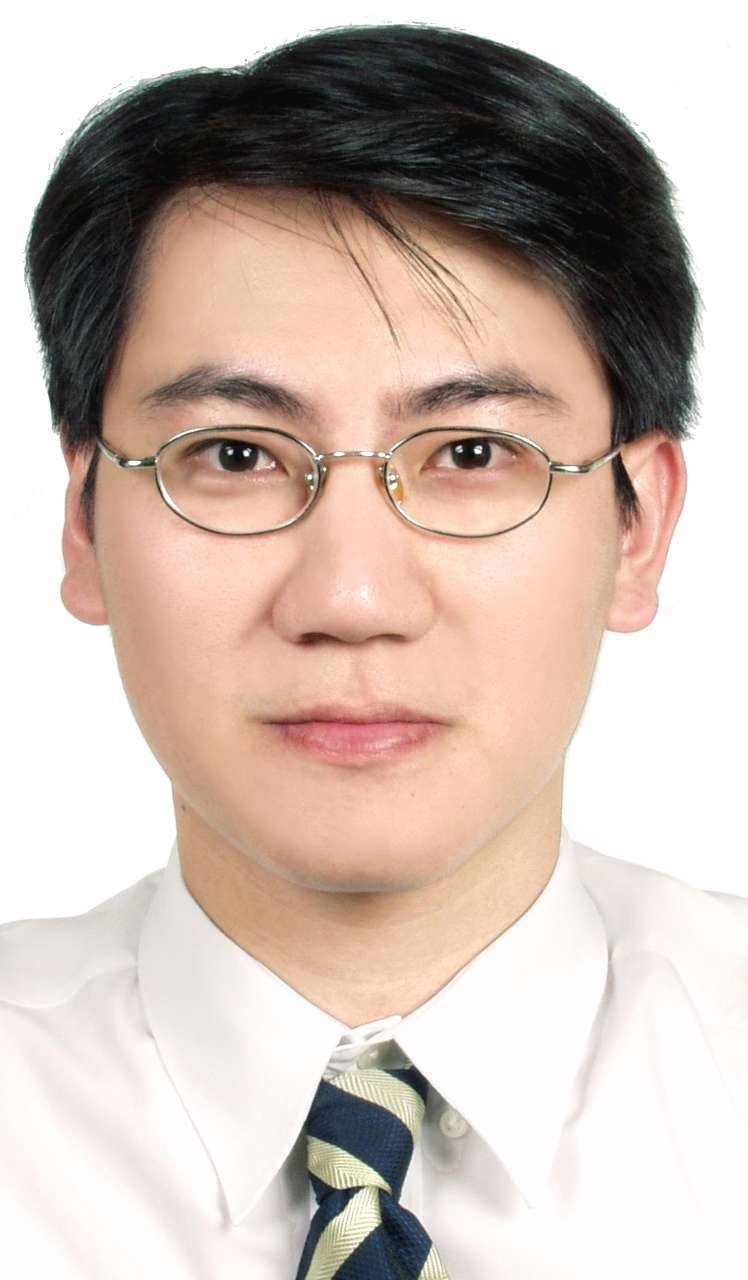 Huan-Chu Huang
Huan-Chu Huang
Dr. Huan-Chu Huang received his Ph.D. degree from the institute of Communication Engineering (EM group) at National Taiwan University (NTU), Taipei, Taiwan. Currently, he is an IEEE Senior Member.
Since 2005, he has been with several global leading smartphone companies, such as HTC, Nokia, Huawei, Apple, and Vivo, all in the area of antenna designs. To date, he has published 44 IEEE journal and conference papers, held 84 international granted patent families (around 130 granted items), and been invited to deliver talks at IEEE conferences for more than 10 times. He also co-authored the three whitepapers of “GTI sub-6 GHz 5G Device”, “5G Millimeter-Wave Technologies”, and “6G New Antenna Technologies” for the wireless communication industry, and is the reviewer for IEEE Access, IEEE AWPL, MOTL, etc. Presently, he is the Senior Antenna Technical Expert and Antenna Team Leader at the Innovation Research Institute of Visionox Technology Co., Ltd., China. His current research interests mainly involve antenna designs for terminal devices. Besides, he is also the industry adviser for the graduate students of Shenzhen University, China, and the level-5 TRIZ specialist.
IP 12: ACCELERATING INNOVATIONS IN 5G/6G NON-TERRESTRIAL NETWORKS (BY KEYSIGHT)
Abstract:
One of the new features of 5G currently being defined by the 3GPP standards body is NR-NTN. This feature hopes to achieve ubiquitous, or greater, coverage of 5G through space-borne or air-borne assets in areas that would not have coverage otherwise. Such a feature would be useful for ad hoc military networks on the battlefield, or for first responder applications, or for commercial and military usage across mountains, skies, or seas. As this feature is currently in the standards development phase, prototypes with commercial off-the-shelf devices are not yet available. However, with commercial off the shelf software and equipment, you can simulate NTN links in software and prototype them in hardware. A variety of NTN-based scenarios can be simulated. We will present the basis of NTN networks and how to prototype them for research and development.
Biography:
Raymond Shen
Raymond Shen, PhD directs 5G/6G Govt Solutions at Keysight Technologies. In this role he leads Keysight's vast portfolio of end-to-end 5G and 6G test solutions for defense and government. He also leads Keysight’s Cybersecurity and spectrum monitoring solutions, managing solutions that include handheld, outdoor, and modular platforms. He has over 25 years of experience in spectrum monitoring and signal demodulation, with expertise in cellular signals. Shen has a BS EE from Caltech and a MS EE and PhD EE from Stanford University, where his PhD was in the area of neural networks.
IP 13: EXPLAINABLE, CAUSAL AND SAFE AI TECHNIQUES FOR NETWORK AUTOMATION OPERATIONS (BY ERICSSON)
Abstract:
The motivation of this industrial presentation is to provide the GLEBECOM community with recent research findings in explainable, causal and safe AI techniques that support trustworthiness in various network operations and use cases. Ericsson researchers are leading in the field of the aforementioned technologies and we believe this talk will provide with new insights in telecom domain, from an industrial perspective, and give the opportunity to research, industrial or other participants to exchange ideas and enhance collaboration opportunities. The presentation will include the four aforementioned speakers in on the following topics: 1. Explainable AI (XAI) and Explainable RL (XRL): Motivating the need of Explainable AI and XRL, the XAI framework, and with the examples form telecom industry implementing XAI and XRL. 2. Symbolic safe reinforcement learning for RAN control that provides novel formal techniques that assure safe learning in live deployment of RL agents on the network. 3. Causal AI: Causal ML and RL models have better sample efficiency and improved out-of distributional generalization compared to models built on observational data only. We will demonstrate impact of Causal AI for Telecom problems, such as Radio root cause analysis and fronthaul congestion control. 4. Trustworthiness measures. The aim is to provide means to measure and analyze the properties and performance of different explanation methods by exploration and implementation of metrics.
Biography:
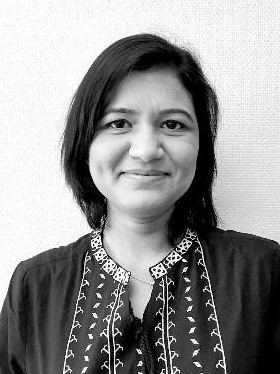 Rafia Inam
Rafia Inam
Rafia Inam is a senior research manager at Ericsson Research and Adjunct Professor at KTH in research area Trustworthy Artificial Intelligence, Sweden. She has conducted research for Ericsson for the past 7 years on 5G for industries, 5G network slices and management, using AI for automation, service modeling for Intelligent Transport Systems. She is specialized in automation and safety for CPS and collaborative robots, trustworthy AI, explainable AI, explainable RL, risk assessment and mitigations using AI methods, reusability of real-time software. Rafia has co-authored 40+ refereed scientific publications and 55+ patent families. She won Ericsson Top Performance Competition 2021, Ericsson Key Impact Award 2020, and Key contributor award 2020. She has won best paper awards on her two papers.
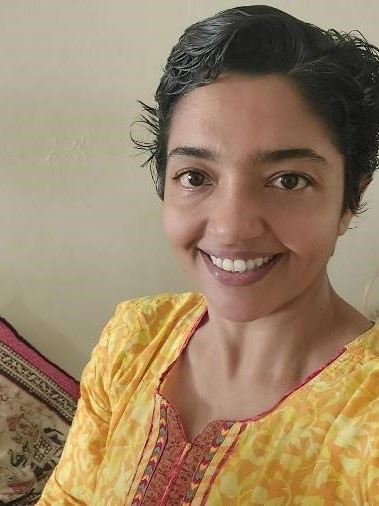 Serene Banerjee
Serene Banerjee
Serene Banerjee has 18+ years of industrial experience post completion of her Ph.D. from The Univ. of Texas at Austin, in 2004. She has a B. Tech. (H) in Electronics and Electrical Communications Engineering from IIT Kharagpur in 1999. At Ericsson she is focusing on developing AI/ML algorithms for Radio Access Networks. Prior to Ericsson she was with Texas Instruments, HP, and Johnson Controls. She has 9 granted patents, 24 peer reviewed publications and several pending.
Alexandros Nikou
Alexandros Nikou holds a PhD degree in Electrical Engineering and Computer Science from KTH and is currently working as senior researcher in Ericsson. His current research interests include multi-agent reinforcement learning and formal methods. He is the author of 30+ peer reviewed conferences and journals, as well as 50+ patent families. In 2022, he won the best paper award in International Conference on Control and Automation (ICCA 2022).
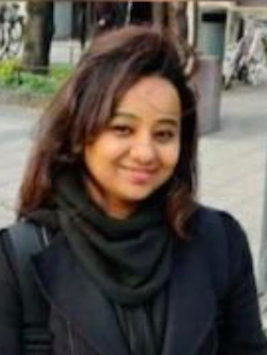 Vandita Singh
Vandita Singh
Vandita Singh is currently working as Researcher in Trustworthy AI in Ericsson. She holds double master’s in computer science from Uppsala University and Information Technology from Centre for Development of Advanced Computing, India. She has about 5 years of experience in academics. Explainable AI, trustworthy AI, data science, machine learning and image analysis are the key areas of her research interest.
IP 16: CONCURRENTLY DEPLOYING MULTIPLE VERTICAL USE CASES IN A COST-EFFICIENT WAY (BY TELENOR)
VIRTUAL
Abstract:
As 5G is widely deployed to provision network services for various vertical industrials, it becomes essential for mobile operators to design and optimize the deployment strategies of network slicing such that multiple vertical customers can be served concurrently with assured quality of services (QoS) whereas the operational cost efficiency is improved for mobile operators. One fundamental capability required is to create multiple network slices and associate them with vertical applications. The deployment strategies answer several key questions, such as: "How many network slice instances should be created to serve all subscribed vertical customers?"; "How these network slice instances should be isolated to assure the QoS and quality of experience (QoE) of these customers?"; "How the cost efficiency could be improved? e.g., via resource sharing, which, however, contradicts the isolation requirement". The answer to these questions decides the values created by network slicing to both mobile operators and vertical industries. Deploying the network slices and vertical applications according to the decided strategies imposes a series of challenges, particularly the unprecedent complexity in integration caused by the multi-vendor and multi-tenant deployment environment. Then enabling technologies are demanded to facilitate the practical deployment, e.g., automation, intelligence, integration, and open APIs. This presentation first reviews the requirements of deploying multiple network slices and services in 5G, followed by the current status of typical deployment decisions. Then challenges and open questions are overviewed for the future work.
Biography:
 Min Xie
Min Xie
Min Xie is a Senior Research Scientist at Telenor Research, in Telenor, Norway. She received her Ph.D in Electrical Engineering from the University of Notre Dame (USA) in 2007 and M.Sc in Electrical Engineering from the National University of Singapore (Singapore) in 2001, respectively. She joined Telenor in 2013 and currently is working on next generation networking technologies towards the deployment of 5G and beyond 5G in Telenor. Her research interest lies in network slicing, NFV, SDN, cloud-native services, service orchestration and assurance, automation, QoS and QoE. She is active in standardization activities in TMForum, ETSI ZSM, ETSI Open Source MANO (OSM), and ETSI TeraFlow SDN (TFS).
IP 25: Latest Updates and Promising Developments on Global mm-Wave Spectrum and its Deployments for 5G and Beyond (BY ERICSSON)
VIRTUAL
Presenter:
Victoria Wang, Ericsson
Abstract:
This presentation will talk about the needs of high frequency bands, study history of mmWave identification of the bands in ITU, global spectrum allocation and licensing progress. Most importantly we talk about the mmWave deployment from typical scenario, usage and current reference cases in some countries for service launch and also the ecosystem updates.
Biography:
 VICTORIA WANG
VICTORIA WANG
Ms. Victoria Wang is a Senior Standardization Manager from Ericsson (China) Communication Co., Ltd. She graduated from Changchun University of Posts and Telecommunications, majoring in radio communication. She used to work in the research of spectrum management and participated in revision of the frequency division table, frequency coordination and station interference monitoring work in the China National Radio Spectrum Management and Monitoring Center. She joint Ericsson (China) in 2000 and has been working in the research area of spectrum management, radio regulation and 3G/4G/5G mobile network standardization and participated the meetings of ITU-R, 3GPP and CCSA. She has actively supported the consultation of China's frequency planning in terms of interference coexistence e.g., for 3.5GHz IMT system and fixed satellite system, and research on the protection of EESS(P) from IMT mm-Wave system. She is now participated in the research on the spectrum requirements and candidate frequency bands of the new generation of wireless communication systems, served as the relevant task leader in domestic forums and technical organizations, and completed the spectrum research report on the evolution of the future IMT system and the 6-GHz mid-band spectrum needs research report.
IP 26: Technologies and Recent Developments of mm-Wave Beamformers for 5G and Beyond (BY TMY)
VIRTUAL
Presenter:
Su-Wei Chang, TMY
Abstract:
For 5G mobile communication and satellite communication systems, the mmWave frequency is gaining increasing importance. The phased-array antenna system is crucial for both applications. In this presentation, the speaker will discuss the difficulties encountered during the design and production of antenna-in-package modules. He will also demonstrate an innovative concept for a phased array antenna system with a high EIRP by integrating a GaN power amplifier with the array system. The integration of GaN power allows for an increase in channel power, which reduces the number of antenna elements, and an increase in PA efficiency to 30%. The general efficiency of silicon-based PAs is approximately 5%. In the concluding segment of this presentation, the speaker will introduce XB eam, the quickest mmWave OTA testing solution. It takes less than 10 seconds to measure the beam pattern of a single antenna.
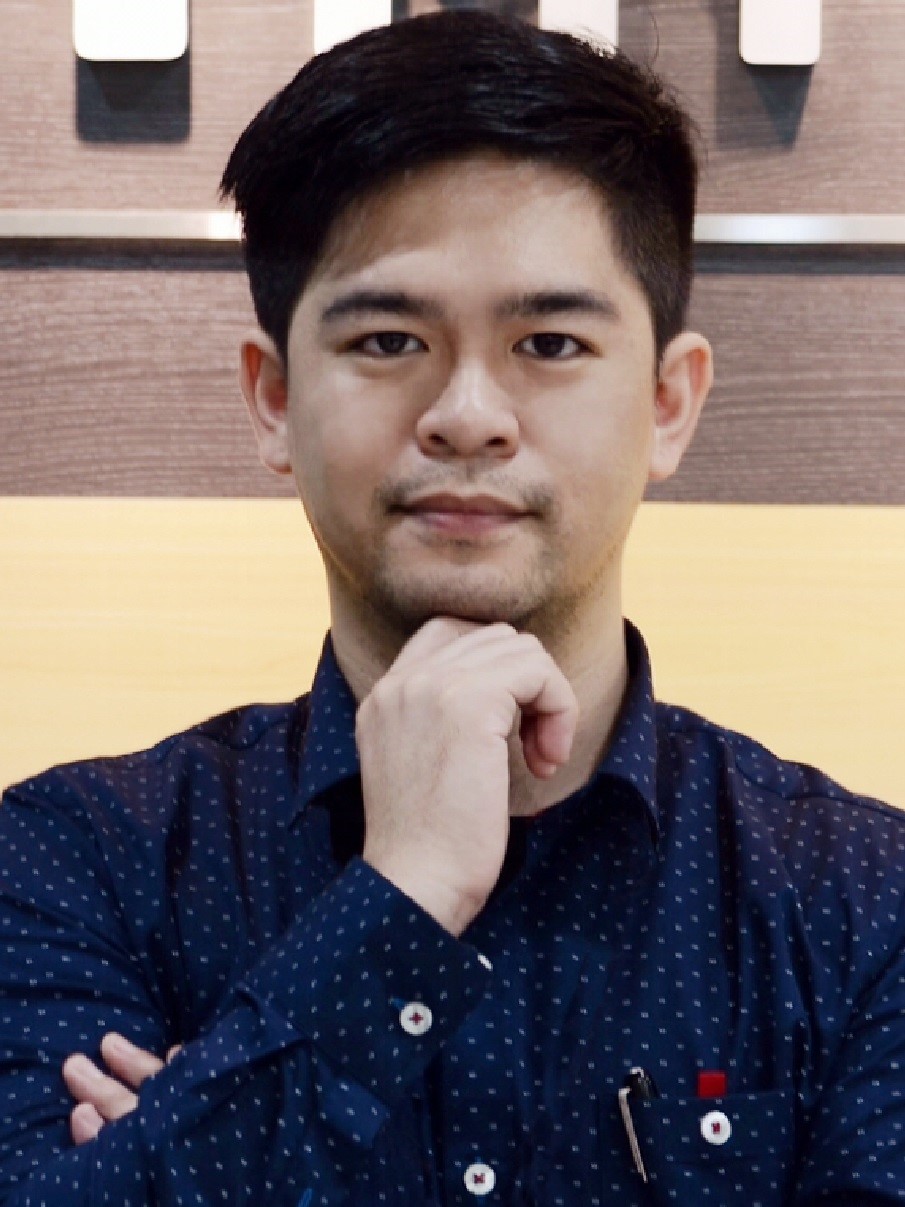 SU-WEI CHANG
SU-WEI CHANG
Mr. Su-Wei Chang received his B.S. degree in Electrical Engineering from Feng-Chia University, Taiwan, in 2005. He then worked in Academia Sinica Institute of Astronomy & Astrophysics (ASIAA) Taiwan as a microwave/ sub-mm-Wave receiver engineer, where he was involved in developing the mm-Wave and sub-mm-Wave receiver system for international radio telescopes. He was also invited to Harvard-Smithsonian Center for Astrophysics to develop 660 GHz receiver while working in ASIAA. He is currently a Ph.D. candidate in the department of Electrical and Computer Engineering at University of Mass-Amherst. His research interests include noises, cryogenic circuits and applications, silicon-based RFIC and MMIC up to mm-wave bands. In 2014, he founded TMYTEK, which focuses on 5G mm-Wave technologies, and is currently the president.
 Gabriel Fré
Gabriel Fré%20Di%20Martino.jpg) Catello (Lelio) Di Martino
Catello (Lelio) Di Martino ROGER NICHOLS
ROGER NICHOLS DANNY ALEX LACHOS PEREZ
DANNY ALEX LACHOS PEREZ VENKATESH RAMASWAMY
VENKATESH RAMASWAMY BILGEHAN ERMAN
BILGEHAN ERMAN Kenneth Stanwood
Kenneth Stanwood Rashad Ramzan
Rashad Ramzan Kenneth Stanwood
Kenneth Stanwood Rashad Ramzan
Rashad Ramzan TARO EICHLER
TARO EICHLER.jpg) SARAH LASELVA
SARAH LASELVA Kenneth Stanwood
Kenneth Stanwood Rashad Ramzan
Rashad Ramzan Andreas Roessler
Andreas Roessler John Cowles
John Cowles Peadar Forbes
Peadar Forbes Brad Brannon
Brad Brannon Nikolaj Marchenko
Nikolaj Marchenko Alberto Martínez Alba
Alberto Martínez Alba Jörg Niemöller
Jörg Niemöller%20Di%20Martino.jpg) Catello Di Martino
Catello Di Martino Robert Gdowski
Robert Gdowski Adam Girycki
Adam Girycki Ilaria Malanchini
Ilaria Malanchini Huan-Chu Huang
Huan-Chu Huang Rafia Inam
Rafia Inam Serene Banerjee
Serene Banerjee Vandita Singh
Vandita Singh Min Xie
Min Xie VICTORIA WANG
VICTORIA WANG SU-WEI CHANG
SU-WEI CHANG






